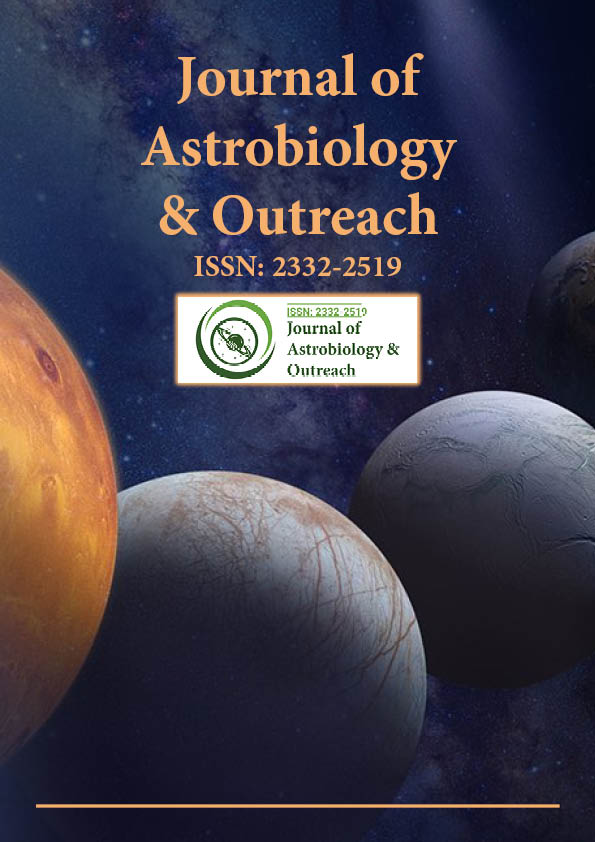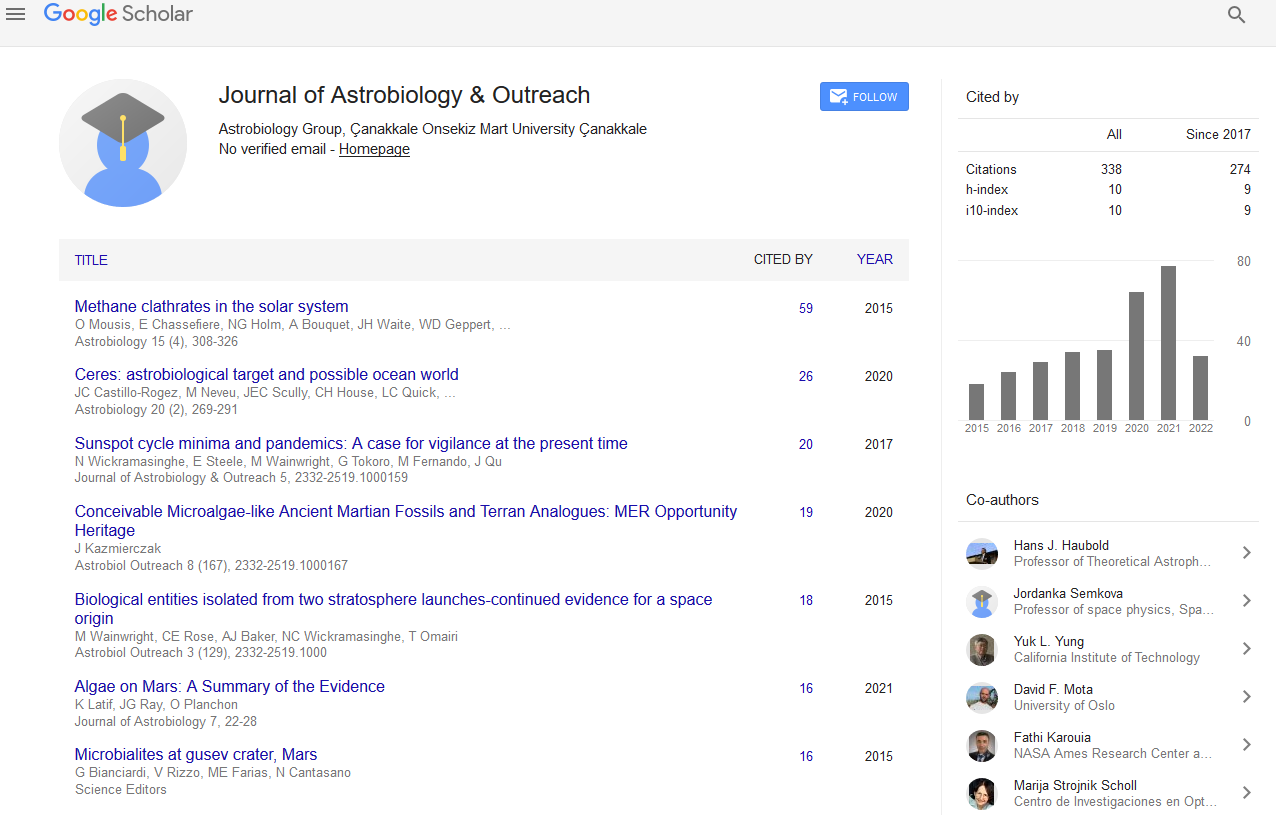Indexed In
- Open J Gate
- Academic Keys
- JournalTOCs
- RefSeek
- Hamdard University
- EBSCO A-Z
- OCLC- WorldCat
- Google Scholar
Useful Links
Share This Page
Journal Flyer

Open Access Journals
- Agri and Aquaculture
- Biochemistry
- Bioinformatics & Systems Biology
- Business & Management
- Chemistry
- Clinical Sciences
- Engineering
- Food & Nutrition
- General Science
- Genetics & Molecular Biology
- Immunology & Microbiology
- Medical Sciences
- Neuroscience & Psychology
- Nursing & Health Care
- Pharmaceutical Sciences
Commentry - (2025) Volume 13, Issue 2
Cosmic Architects Navigating the Science and Ethics of Terraforming
Nicol Sung*, Manuscript No. JAO-23-24458 ; , Pre QC No. JAO-23-24458 ; , QC No. JAO-23-24458 ; , Manuscript No. JAO-23-24458 ; , DOI: 10.35248/2332-2519.24.12.332
Description
Terraforming, a concept deeply rooted in science fiction, has gradually shifted from the kingdoms of imagination to the scientific feasibility. This process involves the deliberate modification of a planet's atmosphere, temperature, and ecology to make it suitable for human habitation. While the idea of terraforming has been popularized in literature and movies, scientists are exploring the potential for turning distant, inhospitable planets into viable human settlements. The science, trials, and ethical considerations of terraforming, showing both its potential and the role of cosmic architects.
Science behind terraforming
Terraforming primarily focuses on altering key environmental factors on other celestial bodies to create Earth-like conditions. Planets within our solar system, such as Mars, have been primary targets for terraforming discussions due to their proximity and perceived potential for habitability. One vital aspect of terraforming is modifying a planet's atmosphere. For instance, Mars has a thin atmosphere composed mostly of carbon dioxide, making it unsuitable for human life. Scientists propose introducing greenhouse gases to thicken the atmosphere, trapping heat and raising temperatures. This process, called "terraforming by greenhouse gases," aims to recreate a warmer climate resembling Earth's.
Another essential consideration is the creation of liquid water. Water is fundamental for sustaining life, and transforming frozen reservoirs on Mars into liquid water bodies is a key objective. This involves heating the planet, perhaps through the use of large mirrors in orbit or by releasing greenhouse gases, to raise temperatures and melt existing ice. Terraforming, while a captivating prospect, is not without its difficult trials. One significant obstacle is the vast amount of time and resources required. The scale of planetary transformation is immense, demanding technologies and efforts beyond our current capabilities.
Ethical considerations
The ethical dimensions of terraforming are complex and multifaceted. Advocates maintain that terraforming could provide humanity with an insurance policy against existential threats on Earth. By establishing colonies on other planets, humans could ensure the survival of our species in the event of a catastrophic event on Earth.
However, ethical concerns arise regarding the potential impact on existing extraterrestrial ecosystems. It able to alter or completely prevent the alien biospheres even microbes exists on other planets. Striking a balance between human survival and respecting the integrity of extraterrestrial environments raises profound ethical questions that require careful consideration.
Role of technology in terraforming
The successful realization of terraforming is heavily on advancements in technology. From developing advanced propulsion systems for interplanetary travel to creating sustainable habitats capable of supporting human life, technology plays a pivotal role in turning the theoretical concept of terraforming into a practical reality.
Nanotechnology and biotechnology are two fields that could significantly impact the terraforming process. Nanotechnology might enable the manipulation of matter on an atomic and molecular scale, allowing for precise control over environmental conditions. Biotechnology, on the other hand, could involve the genetic modification of organisms to thrive in extraterrestrial environments, contributing to the creation of sustainable ecosystems.
Conclusion
Terraforming remains an alluring prospect that captures the imagination of scientists and dreamers alike. While significant strides have been made in our understanding of the science behind transforming alien creations, the road to making these dreams a reality is fraught with trials. From ethical considerations to the role of technology and the need for international collaboration, terraforming demands a holistic and thoughtful approach. The idea of humanity becoming interplanetary species is no longer confined to the pages of science fiction. Terraforming represents a bold vision for the future of our species one that trials us to push the boundaries of our scientific and ethical understanding while considering the broader implications of our actions in the cosmos.
Citation: Sung N (2025) Cosmic Architects Navigating the Science and Ethics of Terraforming. J Astrobiol Outreach. 13:373
Copyright: © 2025 Sung N. This is an open-access article distributed under the terms of the Creative Commons Attribution License, which permits unrestricted use, distribution, and reproduction in any medium, provided the original author and source are credited.

